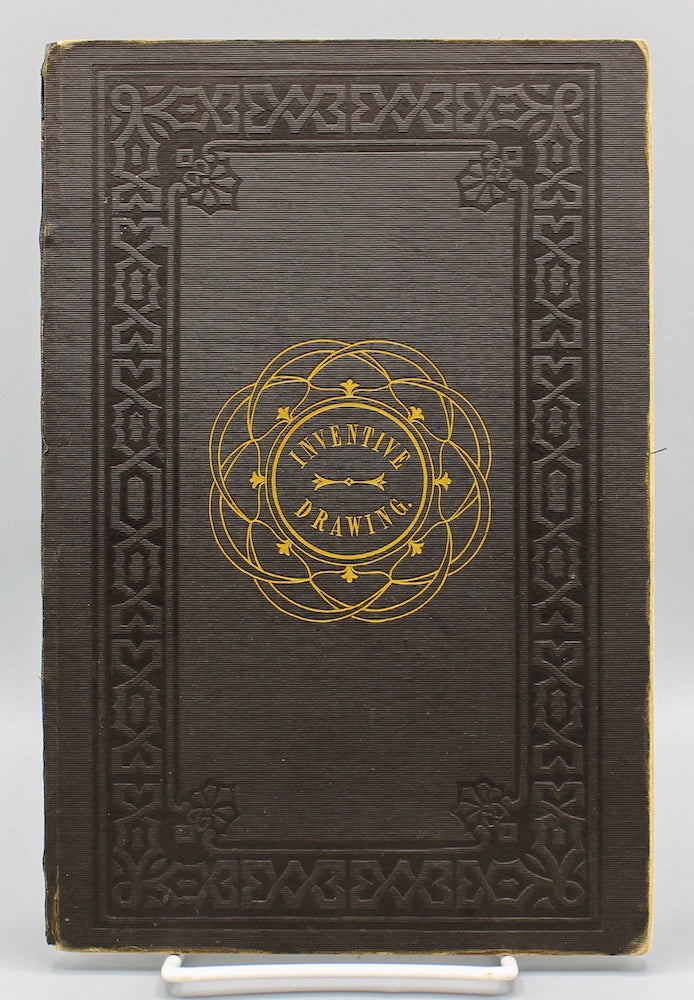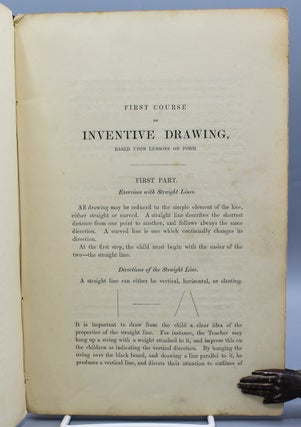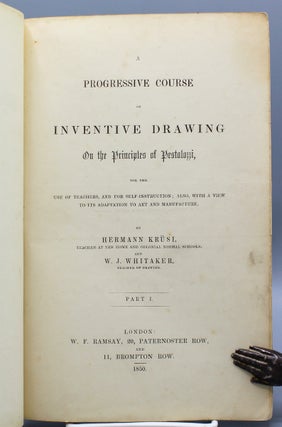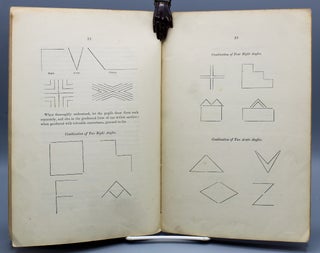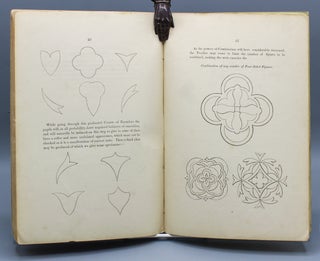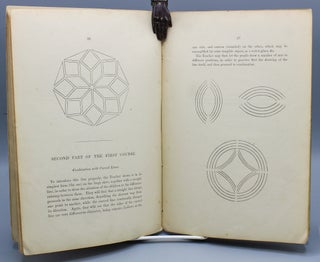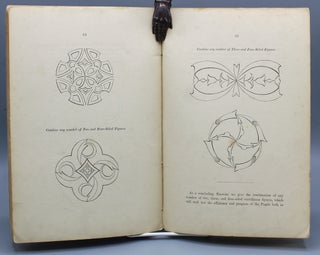A Progressive Course of Inventive Drawing on the Principles of Pestalozzi, for the Use of Teachers, and for Self-Instruction...
London: W.F. Ramsay, 1850. First edition. Identified as “Part I” (of a projected set of two volumes) on the title-page, but it seems that a second volume was never published. Illustrated on nearly every page with multiple printed line drawings of essential shapes in art: basic shapes, more complex illustrations of scenery and architectural features, circular patterns reminiscent of a mandala or spirograph, the fleur-de-lis and other ornamental designs, and more. Binding is bright and attractive despite some rubbing to extremities. Pale yellow endpapers with 1856 signature (Emma Pitchford). Light toning and occasional foxing. A very good copy of a scare book. Publisher’s dark brown cloth with blindstamped border and title (enclosed in a spirograph design). Quarto. 44 pp. Item #17336
Influential art educators Hermann Krüsi (1817 – 1903) and W.J. Whitaker intended the present work for teachers of young students, who would develop “a correct knowledge of form with tasteful application,” (p. 1). The introduction states that course would both develop students’ creative skills and prepare them for education in industrial art. In the present work, the authors differentiate between the limiting method of teaching children to copy drawings done by others and the true creativity inspired by the methods of Pestalozzi and Froebel. Rather than instructing teachers to draw on a blackboard and have students copy the design, the authors recommend tactile examples: for example, giving students thin strips of wood to arrange into lines and geometric shapes, then instructing the students to draw those shapes from life. The influence of Pestalozzi and Froebel’s philosophies of learning through play, as well as the Froebel Gifts, are evident in the course of instruction plotted by the authors. Pestalozzi had been a friend of Krüsi’s father and, in Krüsi’s words, had “acted as one of my godfathers,” (Krüsi’s Recollections of My Life, p. 7). Krüsi also published Principles of Perspective (1857) and Pestalozzi: His Life, Work, and Influence (1875).
OCLC records seven copies, only three in North America (U Kansas, Boston PL, Harvard).
Price: $750.00



